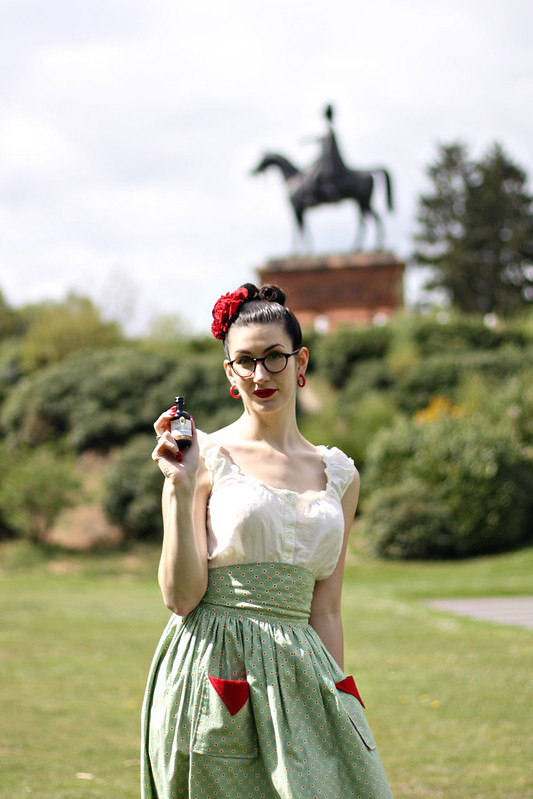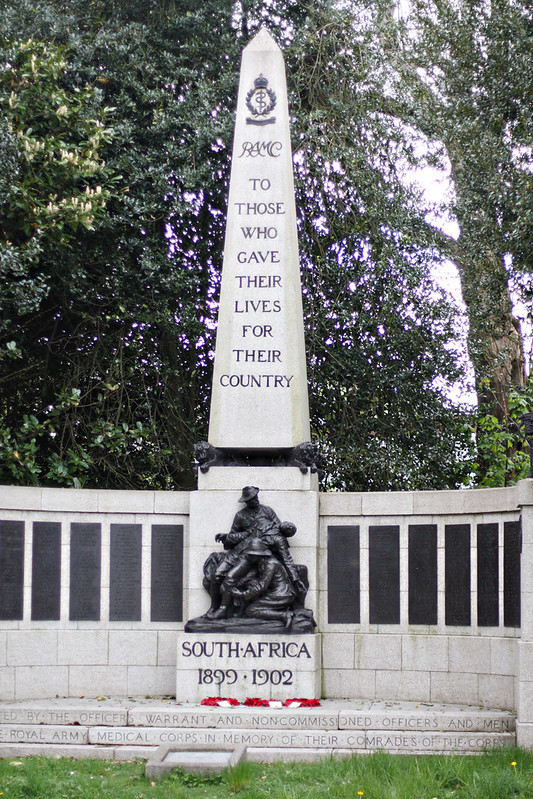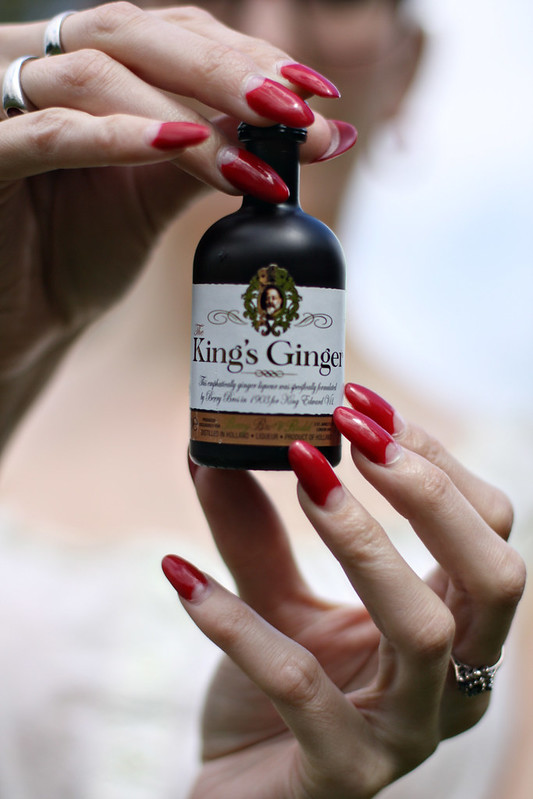As Prince of Wales, Bertie was, of course, very much involved with the army. He trained with them in County Kildare in Ireland in June 1861 at the age of 19. Given his status he was, unsurprisingly, fast-tracked to command... he was promoted to the next rank approximately once every fortnight so that by the time his parents arrived in August, they could watch him command a whole battalion. The Prince was slightly more interested in hanging out with ladies (most notoriously one lady of the night called Nellie Cliften whose liaisons with the Prince drove his father Prince Albert to an early grave in his mother's eyes) than working, with his effort described as 'lacking in energy' by the Duke of Cambridge. But that's a story for another day.
Both the Queen and the Prince were heavily involved with the army and undertook regular military inspections. One such took place in Aldershot in 1856 after the Crimean War which kickstarted the town.
The Queen was such a regular visitor to Aldershot that a Royal Pavilion was built there for her and her family to stay in. Unfortunately, it's now a business park that's simply called 'Royal Pavilion'.
There are two main stories to tell about The Prince of Wales and Aldershot. The first, which is actually the later of the two, was to do with Queen Victoria's Diamond Jubilee, which began in June 1897. She came with the Prince in July 1897 to perform a Jubilee Review of the army at Aldershot, and a total of 60,000 troops lined up across the Long Valley, with 30,000 under arms, for her perusal.
Bertie presented his mother with a picture of himself and his brother Arthur, Duke of Connaught, who had the command there since 1893, taken at Aldershot two years' previously. See the picture in full here.
So that's one story for you. The other big connection with Bertie is the one I travelled to Aldershot itself last week to explore, and it involves a rather large statue. Meet the Duke of Wellington and his horse, Copenhagen.
Wellington was a military hero from the Battle of Waterloo in 1815. So lauded for his exemplary battle record was he that the people of Britain wanted to reward him for his prowess with palaces and all sorts of honours. But the Duke was more modest and only accepted Stratfield Saye as a gift, which was a little less palatial (but still an enormous estate). Coincidentally, it was also where I did my first film extra work, when I did a few days as a peasant on War Horse. How apt!
Wellington bought himself a home on Hyde Park Corner, as his London residence. So, the People decided to build him a statue in the same place. A General Committee for the "Wellington Military Memorial" was formed in 1838, which raised an astonishing £14,000 statue fund in a year. The statue was to be placed on top of the Triumphal Arch on Hyde Park Corner, built ten years earlier by one Decimus Burton. The Queen and the Government were both happy with the idea of a Wellington memorial, wishing very much to honour the man of the moment. Not so Decimus Burton though - he was rather protective of his arch and thought a mounted Wellington on top would be way out of proportion.
He was basically right, because the statue is MASSIVE. Thirty foot tall and weighing over forty tonnes it's absolutely colossal. Making it was no mean feat, either.
It was executed entirely in [sculptor] Matthew Wyatt's workshops in the Harrow Road where he built two great furnaces one capable of melting 12 tons and the other 20 tons of metal, chiefly bronze from cannon captured by the British at the Battle of Waterloo. The plaster cast of the horse's body was moulded round a frame like the ribs of a ship and the whole statue was cast in eight pieces, being joined partly by screw bolts and partly by fusing. Thirty men were engaged in the work which took over three years.
It's very lifelike though (size aside) and I was fascinated by the veins and details. But why is the statue now in Aldershot, you may ask? Well, it was originally put in place, as planned, on top of the Arch on Hyde Park Corner in September 1846. It took twenty horses, a military guard of over 500 and over six hours to hoist the thing onto the top. Hardly had the sweat dried on the men and horses when the controversy started up again. Poor old Copenhagen had long snuffed it by then, so a replacement steed called Rosemary was called in to model. Apparently, those veteran soldiers in the know said he didn't look enough like Copenhagen. Ears were all wrong. And then there were those who didn't like it because of its size (including the aforementioned Mr Burton). It was ridiculed several times in Punch. Queen Victoria protested that it spoiled her view from Buckingham Palace. But nothing could be done while that most honourable hero was still alive, and even after Wellington passed away in 1852, out of respect for him, the mocking subsided for a while and it was left alone.
From Secret LDN
Thirty years later, the terrible traffic congestion around Hyde Park corner was calling for some serious road remodelling and the arch was to be demolished. It seems the whole shebang had grown on the public after so long though, and the people actually didn't want to see it all destroyed, even in the name of progress. Our hero, Bertie, Prince of Wales, was particularly outraged. In 1883, he wrote to Gladstone, suggesting it was moved.
"As regard the old colossal statue of the Duke", he wrote, "I would suggest that it should not be broken up but removed to Aldershot where it will be highly valued by the Army".
Two years later, he got his wish and the Duke made his final journey to Aldershot, taking four days to arrive at a little knoll called Round Hill, where it has been ever since. Bertie came down in August 1885 to attend the handing-over ceremony. The Hantsweb website describes the day thus:
The Prince of Wales took up his position in the centre of the square accompanied by his staff. In a short speech he handed over the monument to Lieutenant General Anderson, the General Officer Commanding, who ordered a Royal Salute of 21 guns followed by the National Anthem. He then thanked the Prince of Wales and led a march past of his staff and the whole military contingent.
Sadly, as these things so often are, it was rather neglected in the last half of last century and was restored not so long ago to its former glory, which is lovely to see.
On a personal note, this was a really fun trip as my dad grew up in Aldershot and, as I said, I was born there, in a military hospital which doesn't actually exist any more. I went to the site of the now derelict hospital to have a look and found one more link to King Edward, this time from when he was actually monarch.
The Aldershot Royal Army Medical Corps Boer War Memorial sits atop Gun Hill and was unveiled in on Empire Day, 24th May 1905 by his Majesty himself. A fitting tribute, I'm sure you'll agree.
And there we have it - some notable events in my birth town attended by our favourite Ginger-drinking monarch. I hope you have enjoyed my little sojourn to what is actually, a pretty horrible town these days, but a little nip of King's Ginger in the sunshine makes everything better!
Read my next blog to find out where my outfit is from!
Fleur xx
DiaryofaVintageGirl.com
















0 comments:
Post a Comment